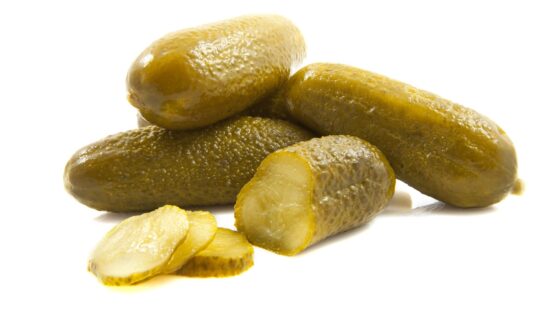Authorities in Slovenia have uncovered the presence of paracetamol in non-processed pickles in acid from India.
The Food Safety, Veterinary and Plant Protection Administration (UVHVVR) said the discovery was made as part of a regular inspection of food imports. Paracetamol is known as acetaminophen in the United States.
Such a result is very rare in Europe. Before Slovenian officials made two Rapid Alert System for Food and Feed (RASFF) alerts in October, paracetamol in food had only been mentioned once before. This was in June 2024 in honey paste from Turkey.
The UVHVVR said the reasons for paracetamol in food and the possible technological effects in food production are not clear. The agency contacted experts from other member states, but they did not have data on the use of paracetamol in the food industry.
Product withdrawal
The UVHVVR carries out surveillance of food suppliers from non-EU countries, checking compliance of shipments with European legislation.
During controls, a consignment of pickles, also known as gherkins, from India, imported by the company AHAC d.o.o., was sampled. The manufacturer is Blos Showers Agro Private Limited. This product did not reach the consumer, with 15,200 kilograms detained in the importer’s warehouse ahead of being destroyed.
First, a qualitative analysis was performed, which confirmed the presence of paracetamol. The sample was then quantitatively analyzed in an accredited laboratory abroad. Results showed the paracetamol concentration was 28.6 mg/kg.
As a precaution, the UVHVVR is sampling store-brand and private-label pickles and other pickled vegetables such as peppers, beetroot, onions and mushrooms.
This action led to a recall of deli gherkins 670-gram from Mercator Cash and Carry; Jager; Tuš; and Spar stores. Consumers were advised to temporarily stop consuming the implicated items with lot numbers 25B0161 and 25B0162, until final test results are received.
The UVHVVR informed the National Institute of Public Health (NIJZ) about the findings and asked the agency to prepare a risk assessment.
Disease data for 2024
NIJZ has recently published data on diseases in Slovenia in 2024.
There were 439 Salmonella infections, up from 264 in 2023. E. coli infections also went up from 352 to 478. Campylobacter cases declined from 1,089 to 1,006 and Listeria infections dropped from 16 to 12 but two people died.
Among 43 Shiga toxin-producing E. coli (STEC) isolates, O103, O26, and O157 were the most common. Three patients developed hemolytic uremic syndrome (HUS). A 66-year-old patient was infected with STEC O8:H19, a 1 year old was infected with STEC O26:H11, and a patient aged 8 was infected with STEC-EAEC O104:H4.
There were four Salmonella Enteritidis outbreaks. They occurred in a nursing home, a catering establishment and among residents. In one outbreak, a group of Slovenians became infected while at a hotel in Croatia. Among sporadic cases, sick people often said they became infected by consuming undercooked poultry or eggs. Travel-related cases frequently mentioned going to Croatia or Turkey before onset of illness.
The most frequently isolated type was Salmonella Enteritidis, followed by Salmonella Typhimurium, and Salmonella Coeln.
(To sign up for a free subscription to Food Safety News, click here)



